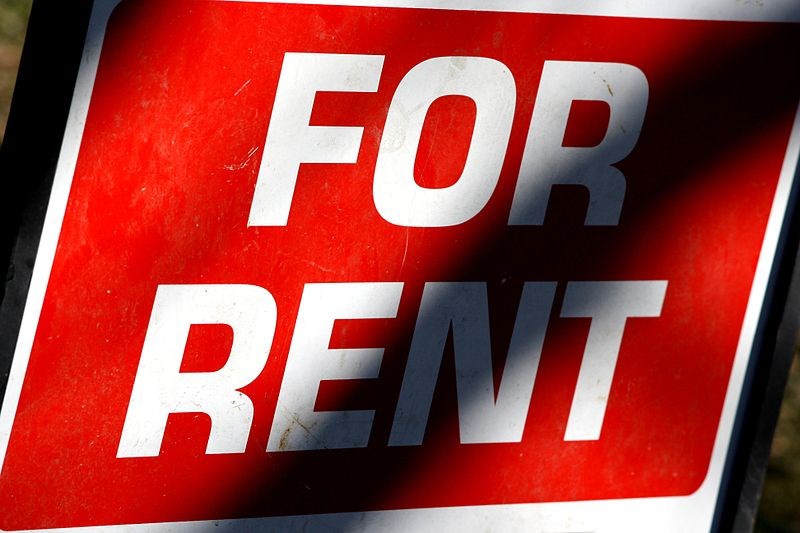Harley Krushelnicki was finally ready to move to a new place.
With a new, higher-paying graphic-design job, he wasn’t working for minimum wage anymore and wanted to upgrade from his two-bedroom apartment in an older St. Albert building.
However, Krushelnicki’s hopes have been dampened by a sharp rise in rents and a vacancy crunch fuelled by Alberta’s strong population growth.
Every time he looks online, prices have inched higher. And more affordable places sometimes disappear before he can even get in touch with a landlord.
His hopes of finding a nicer place in his ideal price range of $1,400 to $1,600 have grown distant.
“It's just right back to square one,” he said. “If I move into a nicer place, it's basically like I'm working a minimum wage job just trying to make ends meet.”
Krushelnicki's experience isn't unique. Rents are on the rise everywhere in Alberta.
While higher in Calgary than Edmonton, Edmonton rentals rose an average 17 per cent annually according to January 2024 data from rentals.ca. That was the highest among Canada’s largest cities.
Data from the Canada Mortgage and Housing Corporation (CMHC) shows in October of last year, St. Albert had the second highest average rent in the Edmonton region at $1,447. The only area with higher average rental prices was Strathcona County, at $1,517. Many Edmonton zones had rents closer to the $1,000 mark than the $1,500 mark.
That data doesn’t account for the price hikes the region has seen in the new year.
When Krushelnicki had checked out the rental market in St. Albert a couple years ago, luxury three-bedroom apartments were going for $1,600 or $1,700 a month. But now he is seeing those prices for two-bedroom apartments, and even basement suites.
Even the $1,200 rent for his two-bedroom apartment in an older building could soon rise by $200, he said.
Krushelnicki is waiting to hear back from three St. Albert landlords, but he knows there is a long line of renters waiting for those places. If none of them pan out, he’s thinking of packing his bags and taking a short ride south to Edmonton.
“Most of my life I lived in St. Albert, so I love St. Albert, and I'd love to stay here,” he said. “But if I need to, I will move to Edmonton, just because I know the demand for apartments in St. Albert is terrible. The options are not there.”
Krushelnicki isn’t alone.
Natalie Korpan moved to a three-bedroom townhouse in a new neighbourhood on the west side two years ago. She had already been living in the city for some time before the move, but originally came to St. Albert from Toronto.
Lower rents relative to Toronto were part of the city’s appeal. That’s starting to change.
In May her rent, currently $2,050, will rise by $125. She negotiated that price down from $150.
It’s a steep increase from last year when her rent rose $50.
“I understand that usually landlords raise prices every year, but maybe it should be two or three per cent,” she said.
She lives with her two children and her mother, who can’t work because of dementia.
“For me, it's very difficult to pay because, like, I'm just by myself,” she said.
She likes St. Albert because of its small community feel, something that was attractive to her after living in a big city for so long.
“We love the greenery here. We love the infrastructure … I know so many people here, and now it's our home,” she said.
Edmonton has some draw because it is one of the closest places she could move, keep her friends, and not uproot her young daughter’s life. But eventually, she could see herself moving to a small town in B.C.
“But at this point, I don't know what's going to happen,” she said.
The St. Albert-Edmonton price differential
“What we're seeing in Alberta is that the rents are increasing more quickly than incomes,” said Dr. Damian Collins, a human geographer and housing researcher at the University of Alberta. “When that happens, people get started getting housing stress pretty quickly.”
Alberta’s population boom is the main driver of the rent hikes, Collins said.
Last year the province gained 202,000 new residents. In the same time period, St. Albert’s private apartment vacancy rate dropped from 2.2 per cent to 0.9 per cent, according to CMHC data. 2023 year-end data from the city pegs the vacancy rate for all rental apartments in the city at 2.2 per cent.
Higher interest rates have also kept potential homebuyers renting for longer, adding to the demand for rentals, Collins said.
Rent hikes are “to a certain extent … self-perpetuating,” Collins said. When one landlord raises rents by 14 per cent, it’s a signal to the landlord across the street to do the same, he said.
In Alberta, landlords can legally raise rents as high as they want but can only increase once a year.
The trend in Canada is for larger numbers of people to migrate away from large urban centres into satellite communities and suburbs where housing is a bit more affordable. St. Albert may be reversing this trend because the city is so short on rental supply compared to Edmonton, Collins said.
While building more rental units is an important strategy to slow rent hikes, Collins said Canada and the province should also be thinking about people who “struggle to afford anything in the market.”
“We also need a non-market sector to ensure that everyone has access to adequate housing,” he said.
About four per cent of Albertans live in social housing. In St. Albert, demand for some social housing supports doubled last year.




